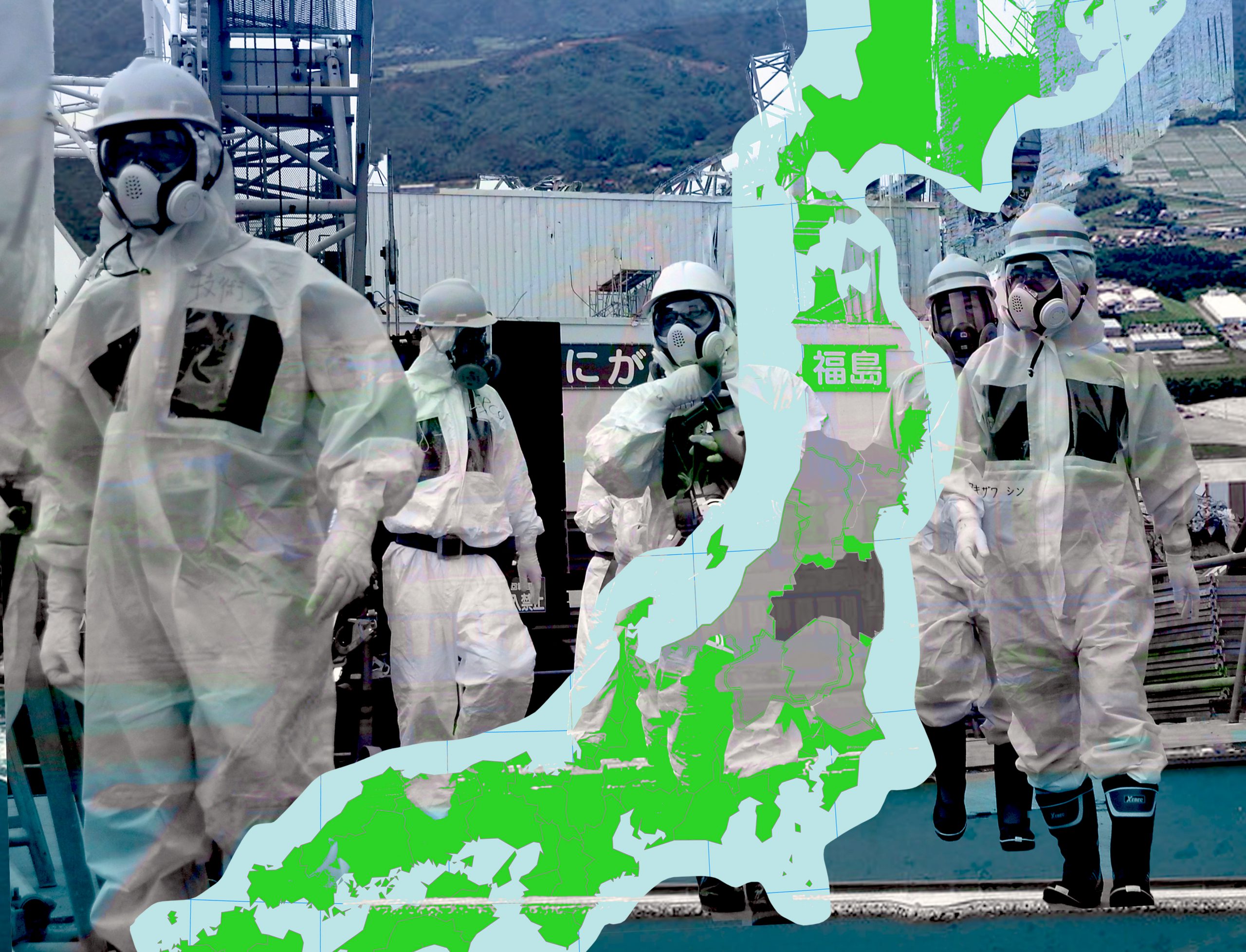2023 News Articles – All Posts
Nothing Found
It seems we can’t find what you’re looking for. Perhaps searching can help.
2022 Select Highlighted Press Items
Nuclear Modernization is the ’Absolute Minimum,’ STRATCOM Commander Says | March 8, 2022
US tested hypersonic missile in mid-March but kept it quiet to avoid escalating tensions with Russia | April 4, 2022
Putin’s Nuclear Threats Are a Wake-Up Call for the World | March 15, 2022
Intelligence report determines that Russia's WMD threats will grow as losses mount in Ukraine | March 19, 2022
China and the United States: It’s a Cold War, but don’t panic | March 10, 2022
Russian military doctrine calls a limited nuclear strike “de-escalation.” Here’s why. | March 8, 2022
North Korea says it will strike with nuclear weapons if South attacks | April 4, 2022
Flying Under The Radar: A Missile Accident in South Asia | April 4, 2022
2022 News Articles
Biden Proposes $1 billion for Nuclear Weapons Work
If Savannah River is delayed in reaching its pit-making goal, Los Alamos lab could be pressured to produce more than 30 pits a year.
“All of this may boomerang on Los Alamos lab, which has been incapable of making a pit for the nuclear weapons stockpile since 2011,” said Jay Coghlan, executive director of Nuclear Watch New Mexico.
Coghlan was referring to a contract in which the lab made 11 pits in one year for Navy missiles a decade ago. That was the lab’s highest pit production, which soon ceased.
BY: Scott Wyland | © Santa Fe New Mexican
Los Alamos National Laboratory would receive about $1 billion for plutonium operations at the heart of its effort to produce 30 nuclear bomb cores by 2026, according to a partial budget the White House released Friday.
The amount would be more than a 20 percent jump from the $837 million being spent this year on the lab’s plutonium work, a clear signal that President Joe Biden will echo his predecessors’ calls to modernize the nuclear stockpile to deter China, Russia, Iran and other adversaries that have growing first-strike abilities.
The lab’s $837 million plutonium budget this year was 2.7 times larger than the prior year’s allocation of $308 million.
The lab’s plutonium funding was part of the draft budget for the National Nuclear Security Administration, the federal agency in charge of the country’s nuclear weapons program.
The budget also requests $603 million — a 37 percent increase — to move the Savannah River Site in South Carolina toward producing 50 pits a year.
Next Steps Following Public Hearing on New Shaft for WIPP Expansion
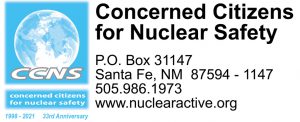 Last week the New Mexico Environment Department virtual public hearing on the new shaft to expand the Waste Isolation Pilot Plant (WIPP) took place over four days, from Monday through Thursday. The public comment period ended on Friday.
Last week the New Mexico Environment Department virtual public hearing on the new shaft to expand the Waste Isolation Pilot Plant (WIPP) took place over four days, from Monday through Thursday. The public comment period ended on Friday.
[A special shout out to all those who submitted public comments. THANK YOU!!!]
The hearing process continues until at least October with the filing of post-hearing documents by the Parties supporting the expansion, including the Hazardous Waste Bureau of the Environment Department https://www.env.nm.gov/hazardous-waste/ , the Department of Energy (DOE), and Nuclear Waste Partnership, LLC, the contractors at WIPP. https://wipp.energy.gov/
The Parties opposing the expansion are: Southwest Research and Information Center http://www.sric.org/ ; CCNS http://nuclearactive.org/ ; Nuclear Watch New Mexico https://nukewatch.org/ ; and individuals, including longtime activist Deborah Reade; former Environment Department Regulator for WIPP, Steve Zappe; and a former Environmental Evaluation Group (EEG) scientist, George Anastas. Dr. James Channell, another former EEG scientist, testified in opposition to the new shaft and WIPP’s physical expansion. http://www.sric.org/nuclear/eeg.php
CCNS anticipates the Hearing Officer’s report and the Parties’ comments will end up on the Environment Department Secretary’s desk in mid-September.
Piketon Fears More Radiation Risk from Demolition of Former Uranium Plant
Piketon fears more radiation risk from demolition of former uranium plant. … The demolition in Piketon comes after the federal agency promised the community, which has experienced high cancer rates, independent testing for radiological contaminants. The results are expected to come later this year.
Big Development on the Nuclear Horizon – Huge growth at LANL in plutonium pit production raises ethical issues
ABQJournal – May 26, 2021 —
SANTA FE, N.M. — Huge growth at LANL in plutonium pit production raises ethical issues.
Honeywell the Moneyhell : Metropolis Nuclear Whistleblower Exposé Exclusive
Regional Coalition Of LANL Communities Board Unanimously Passes Resolution To Dissolve
THANK YOU to everyone who contacted city officials opposing the Regional Coalition of LANL Communities!
BY MAIRE O’NEILL maire@losalamosreporter.com| losalamosreporter.com
Members of the Regional Coalition of LANL Communities board voted Friday afternoon to approve a resolution authorizing the direction of the winding down of the RCLC at the point of its termination. The resolution also directs legal counsel Nancy Long, treasurer Los Alamos County Councilor David Izraelevitz and Los Alamos County as the fiscal agent to take all actions necessary and warranted to see that the termination and all matters that need to be attended to upon that termination, are taken care of in an orderly way and ratifies actions that have been taken to this point to accomplish that.
Long said the resolution is the beginning of the process and that the resolution expresses the will of the board that the RCLC be wound down and terminated officially with the actions that are necessary to accomplish that.
“We foresee that there will be matters relating to payment of invoices and completing the audit for the fiscal year and we’re hoping to accomplish all those in short order if the board decides this is the direction it wants to take with the organization,” she said.
Ironically, the motion to proceed with the resolution for the disbandment and dissolution of the Coalition was made by Rio Arriba County Commissioner Christine Bustos who later said it was her first and last meeting. Santa Fe City Councilor Michael Garcia seconded the motion. Garcia had abstained during voting with his own government in decisions regarding the Coalition.
Only five member entities were represented at the meeting and all five voted in favor of the resolution. Absent were Santa Fe County, Taos County, Jemez Pueblo and Ohkay Owingeh Pueblo.
Garcia thanked the community members for their constant engagement in the RCLC process.
“I think its critical that in the RCLC or any other entity community engagement is critical and I believe that as we move forward through this process we still need to continue to keep our community members engaged and make sure we are working towards our best interests,” he said.
Espanola Mayor Javier Sanchez said he learned a lot in terms of what Espanola needs to do in terms of advocacy and what need to be done to champion issues improve the lives of constituents.
NM Archbishop Can’t Stay Silent on LANL’s Arms Work
“I believe strongly that Pope Francis is right. For peace to flourish, we have to lay down weapons,” [Archbishop of Santa Fe John Wester] said, referring to Pope Francis’ statement that even the possession of atomic weapons of war was immoral.
“And any continuing development of nuclear weapons, and refining them, is going in the wrong direction.”
BY: T.S. Last / Journal North
Published: Wednesday, May 26th, 2021
Copyright © 2021 Albuquerque Journal
SANTA FE – Archbishop of Santa Fe John Wester praises much of the work being done at Los Alamos National Laboratory. The lab’s expertise greatly contributes to developments in bioscience, computer science, engineering, medicine and modeling that helped the nation navigate through the COVID-19 pandemic.
But it also builds bombs – the kind capable of killing massive numbers of people. And that’s not an easy thing for him – and some Catholics working for the lab – to reconcile.
Wester says that as the archdiocese within which the lab operates, the Santa Fe Archdiocese has a “moral responsibility” to facilitate discussion about the lab’s national security mission, most of which is dedicated to weapons production.
“I believe strongly that Pope Francis is right. For peace to flourish, we have to lay down weapons,” he said, referring to Pope Francis’ statement that even the possession of atomic weapons of war was immoral. “And any continuing development of nuclear weapons, and refining them, is going in the wrong direction.”
Wester’s remarks come just as Los Alamos National Laboratory is expanding its national security mission through production of plutonium pits, the cores of nuclear warheads that detonate the bombs. As a direct result of the project, the lab has begun expanding into Santa Fe, the city named for St. Francis of Assisi.
The pope’s 2019 statement was the harshest condemnation of weapons of mass destruction to date from the church. He could have been speaking about LANL and its new mission to manufacture plutonium pits when he said, “In a world where millions of children and families live in inhumane conditions, the money that is squandered, and the fortunes made in the manufacture, upgrading, maintenance and sale of ever more destructive weapons, are an affront crying out to heaven.”
Meet the Senate nuke caucus, busting the budget and making the world less safe
These lawmakers represent states with a direct interest in pouring billions into modernizing and building new weapons.
By: Marcy Winograd and Medea Benjamin | responsiblestatecraft.org
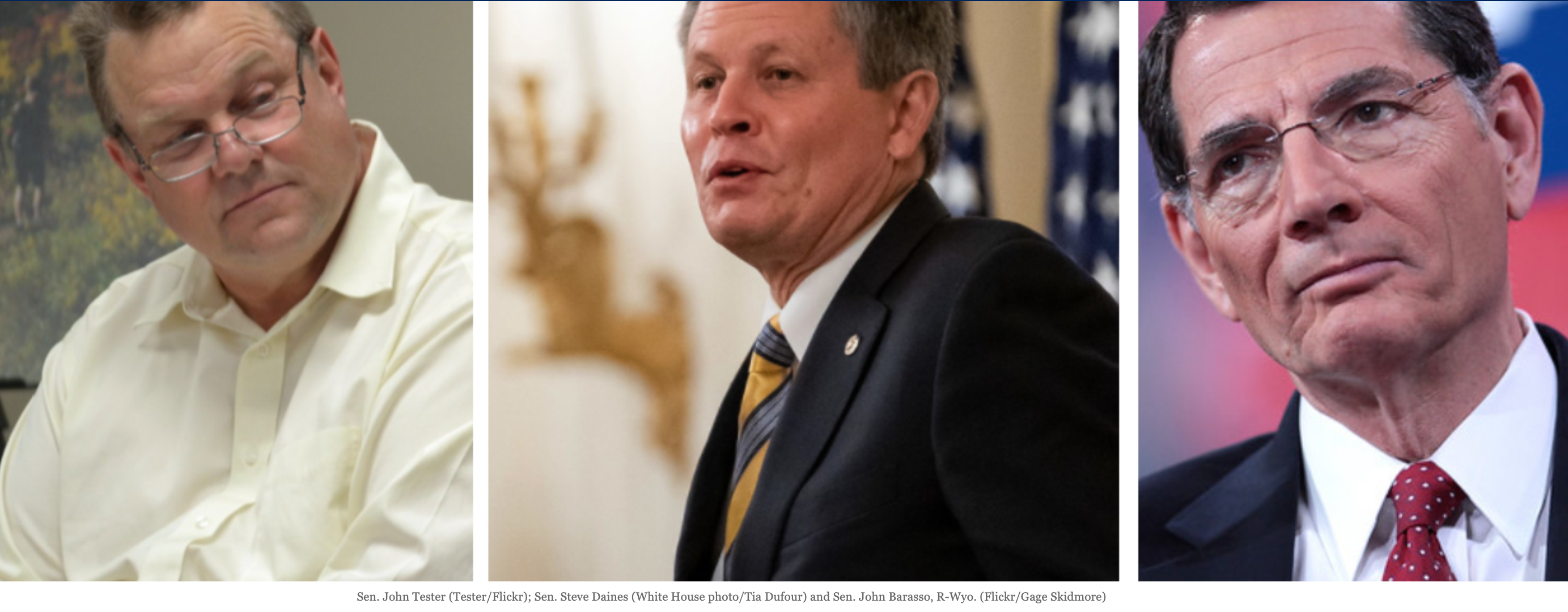
Democrats might control the legislative and executive branches of the U.S. government right now, but a small Republican-dominated Intercontinental Ballistic Missile (ICBM) Coalition exercises outsized influence in a frightening campaign for nuclear rearmament.
The coalition, comprising six senators from states that house, develop, or test underground land-based nuclear weapons, is pushing a wasteful and dangerous $1.7 trillion, decades-long plan to produce new nuclear weapons, some with warheads 20 times more powerful than the atomic bomb dropped on Hiroshima.
While the 1980s witnessed the nuclear freeze and a mass movement to demand nuclear disarmament between the U.S. and Soviet Union, the 1990s gave birth to the missile caucus, the Congressional engine careening the U.S. into a renewed nuclear arms race.
Santa Fe to exit Regional Coalition of LANL Communities
THANK YOU to everyone who contacted city officials in support of overturning the RCLC for good!
By: Sean P. Thomas sthomas@sfnewmexican.com | Santa Fe New Mexican
The Santa Fe City Council unanimously approved a resolution Wednesday to pull the city from the Regional Coalition of LANL Communities, a consortium of local and tribal governments with economic ties to Los Alamos National Laboratory.
Santa Fe’s resolution requests that the coalition return dues paid by the city and instructs city officials to begin exploring other ways to lobby the laboratory for economic opportunities and environmental cleanup.
The coalition’s board voted Friday to begin winding down the entity and close out debts, before paying back members their 2021 dues.
“I think it’s important to state while this process is going on that we approved this resolution withdrawing the city of Santa Fe from the RCLC,” said Councilor Renee Villarreal.
The coalition was formed in 2011 to advocate for sitewide cleanup and economic opportunities at the laboratory, but critics have said the coalition no longer achieves its original purpose.
Surprise! Upgrading America’s Nuclear Arsenal Will Be Stupefyingly Expensive
The cost jumped $140 billion in just 2 years. Here’s why.
BY: KYLE MIZOKAMI | popularmechanics.com
- The Congressional Budget Office (CBO) now says the cost of updating the U.S.’s nuclear weapons is $140 billion more than it estimated just 2 years ago.
- The increase is largely due to inflation and the inclusion of new, expensive projects the CBO didn’t cover 2 years ago.
- The new estimate comes as a proposal in Congress seeks to trim the nuclear budget.
The nonpartisan Congressional Budget Office’s (CBO) estimate of nuclear weapon expenditures over the next decade has jumped a staggering $140 billion in just 2 years.
The estimate, which the agency provided to Congress to give an idea of how much it will take to build new missiles, ships, and planes, as well as revamp America’s vast nuclear infrastructure, comes as key members of the legislature are pushing to cut nuclear weapons spending over the next 10 years.
Estimated Cost of US Nuclear Modernization Jumps 28 Percent
The Congressional Budget Office’s latest estimate puts the price tag at $634 billion as some lawmakers try to bring it back down.
BY PATRICK TUCKER | defenseone.com May 24, 2021
The estimated cost of replacing America’s nuclear bombers, missile submarines, and ICBMs just jumped again—from $315 billion in 2015 to $494 billion in 2019 and now to $634 billion, a 28 percent increase, according to a Congressional Budget Office report released Monday.
The report identifies a $140 billion increase in the cost of nuclear delivery systems and weapons, such as ICBMs, as the largest contributor to the jump. “Projected costs for command, control, communications, and early-warning systems have also increased substantially,” it says, adding that if full costs of B-52 and B-21 bombers were included, “the total costs of nuclear forces, with cost growth, would be $711 billion.”
It’s the second time CBO has raised their projections for the costs of modernizing U.S. nuclear forces.
Some lawmakers have balked at what they perceive as the steep price tag for modernizing the U.S. nuclear weapons arsenal. Sen. Ed Markey, D-Mass., has called for a debate specifically on the high cost of replacing the intercontinental leg of the triad. On Monday, he unveiled a new bill, dubbed the SANE act, to cut $73 billion from the U.S. nuclear weapons budget.
Department of Energy seeks to modify N.M. plant’s nuclear waste permit
Dragging out WIPP’s operations decades past the original 20-year agreement violates the social contract made with New Mexicans, said Scott Kovac, research and operations director for the nonprofit Nuclear Watch New Mexico.
WIPP is being equipped to take the waste that will be generated from production of plutonium pits for nuclear warheads, Kovac said.
“It [WIPP] was never really suppose to do that,” Kovac said.
Scott Wyland swyland@sfnewmexican.com | Santa Fe New Mexican May 17, 2021
Federal officials say a new air shaft is needed at the nuclear waste disposal site in Southern New Mexico to keep workers safe and run more efficiently.
Watch this video from the Stop Forever WIPP coalition: “When is a shaft more than a shaft?” dispelling the idea that an expansion of WIPP will mostly impact the South Eastern part of New Mexico; The new waste targeted for WIPP would be re-processed at Los Alamos. It also dispels the idea that targeting NM for waste disposal has nothing to do with our minority majority population.
The U.S. Government Hides Some Of Its Darkest Secrets At The Department Of Energy
The Department of Energy controls many ‘black projects’ that live outside of the limelight that is intrinsic to the DoD and the intel community.
BY BRETT TINGLEY | thedrive.com May 13, 2021
When it comes to discussions of government secrecy, much of the conversation tends to revolve around the Department of Defense (DOD) or the U.S. Intelligence Community (IC). After all, the U.S. military develops many of the United States’ most sensitive weapon systems used to defend America and project its power globally, and the IC gathers and analyzes sensitive information on foreign threats and external national security matters. Each year, the budget requests from the U.S. military are packed with classified and Special Access Programs, or SAPs, sporting vague code names, many of which never see the light of day. When we talk of the “black world,” most often that conversation centers around these programs and technologies suspected to be housed deep within the classified ends of the Pentagon and its various service branches.
Often left out of this conversation is the fact that there is a wholly separate cabinet-level department of the U.S. government that is arguably even more opaque in terms of secrecy and oversight than the Department of Defense. Over the last few years, allegations of secret, exotic technologies have reinvigorated claims that the DOD may be concealing scientific breakthroughs from the American public. However, if the U.S. government, or some faction within it, hypothetically came across a groundbreaking development in energy production or applied physics, a very strong case could be made that such a revolution would likely be housed deep within the Department of Energy (DOE) rather than DOD.
County Commission votes to exit Regional Coalition of LANL Communities
The exodus from the Regional Coalition of LANL Communities continued Tuesday.
“Jay Coghlan, executive director of Nuclear Watch New Mexico, agreed, adding he believed the coalition effectively stood in the way of site cleanup by supporting a 2016 consent order.”
By Sean P. Thomas sthomas@sfnewmexican.com | Santa Fe New Mexican
The Santa Fe County Commission voted unanimously to ditch the coalition after some commissioners voiced concerns that the body was no longer the proper vehicle to advocate for site cleanup and mission diversification at Los Alamos National Laboratory.
“The mission of the RCLC and the attempt of the collaboration is admirable,” said commission Chairman Henry Roybal, who stepped down as chairman of the Regional Coalition of Los Alamos National Laboratory Communities this year. “However with the progress, it does not seem like this vehicle is the best avenue to express this collaborative voice. There are so many things that just aren’t where they need to be.”
The coalition was formed in 2011 and consists of local and tribal governments. It was created to provide local governments an opportunity to advocate for jobs, environmental cleanup and other priorities at the laboratory.
Each member organization pays annual dues to be a member, with Santa Fe County at $10,000.
LANL’s move to Santa Fe means jobs, and controversy
By: Editorials / ABQJournal
Santa Fe’s relationship with Los Alamos National Laboratory has been rocky for years. The City Council, with some regularity, has passed resolutions of concern about the nuclear weapons lab’s environmental impact and radioactive materials safety lapses, the production of weapons parts in Los Alamos and the proliferation of nuclear weapons in general.
ILHAN OMAR SIGNS ICAN PLEDGE

April 30, 2021: Representative Ilhan Omar today submitted her signed ICAN Pledge to ICAN, becoming the eleventh member of the US Congress to sign the Pledge. Rep. Omar represents Minnesota’s 5th Congressional District in the US House of Representatives. Rep Omar also co-sponsor the H.R.2850 Nuclear Abolition and Economic Conversion Act of 2021 that Representative Eleanor Holmes Norton reintroduced on April 26, 2021.
Regional Coalition Of LANL Communities Struggles To Survive
Jay Coghlan, executive director of Nuclear Watch New Mexico complained that the RCLC main selling point was to lobby for mission diversification and accelerated cleanup and said he would argue that the Coalition has been a spectacular failure on both counts.
“When the Coalition was founded in 2011, LANL’s nuclear weapons budget was $1.9 billion. A decade later that budget is $2.9 billion and the total spending on core nuclear weapons research and production has risen year after year to where now it’s a full 70 percent of all funding and all of the remaining 30 percent either directly or indirectly supports those nuclear weapons,” Coghlan said.
By: MAIRE O’NEILL maire@losalamosreporter.com | losalamosreporter.com May 3, 2021
The next couple of months may determine the demise of the Regional Coalition of LANL Communities. The City of Santa Fe opted last month not to approve the RCLC’s amended and restated joint powers agreement which has been hanging out there waiting for the City’s decision since March 2019. The City is slated to decide whether to withdraw completely from the RCLC later this month.
The Taos County Commission is slated to decide Tuesday whether it wishes to continue as a member and Santa Fe County Commissioners have the same decision to make at their May 11 meeting.
Los Alamos County Council is expected to discuss its RCLC status in June which will be the first time the Council will have had an agenda item on the RCLC since it approved the amended JPA in July of 2020. The discussion is at the request of Council Vice Chair James Robinson. Councilor David Izraelevitz, who serves as RCLC treasurer, has been a strong advocate of the RCLC and has recently addressed several meetings of members of the Santa Fe City Council at the behest of Councilor Michael Garcia to encourage them to approve the amended JPA. City of Espanola Mayor Javier Sanchez also attended a Santa Fe City Council meeting to advocate and answer questions.
NNSA approves Critical Decision 1 for Los Alamos Plutonium Pit Production Project
“Recommended approach to producing 30 plutonium pits per year identified”
CD-1 approval marks the completion of the project definition phase and the conceptual design as part of DOE’s Order 413.3B process for the acquisition of capital assets. NNSA identified its recommended approach to produce at least 30 plutonium pits per year to meet national security needs.
The CD-1 cost estimate for LAP4 is $2.7-$3.9 billion, with an overall project completion range of 2027-2028. Critical equipment is scheduled to be installed in time to achieve the 30 pits per year production capacity in 2026. The CD-1 cost estimate and project completion date ranges are preliminary estimates that will be refined as the project conceptual design is matured to the 90% design level required to achieve CD-2 (approval of the performance baseline). Consistent with industry best practices and DOE policy, NNSA will set the performance cost and schedule baseline at CD-2, which is expected in 2023.
NNSA leadership and LANL will continue to review this project to improve the fidelity of the current price estimate and schedule.
###
Los Alamos lab sees two mishaps in a week
The water spill should be a reminder that the plutonium facility’s work is done by people, and people make mistakes, said Scott Kovac, research and operations director for the nonprofit Nuclear Watch New Mexico.
“Pit production will place a real time-pressure crunch on the workers and lead to more accidents,” Kovac said.
“It should lead us to consider the consequences if someone left a plutonium furnace on or something that could endanger the public…these kinds of missteps are likely to increase as the lab ramps up production of plutonium pits used to trigger nuclear warheads. Current plans call for the lab to make 30 of the nuclear bomb cores a year by 2026,”
By: Scott Wyland | santafenewmexican.com April 26, 2021
Los Alamos National Laboratory had two mishaps in one week: a glove box breach that contaminated workers’ protective equipment and a spill of 1,800 gallons of water into a vault corridor after an employee left a valve open.
The incidents were the latest in a series of accidents in recent months at the lab, as reported by the Defense Nuclear Facilities Safety Board.
In the board’s most recent report, an alarm sounded March 29 when a worker tore a protective glove attached to a sealed compartment known as a glove box while handling a piece of plutonium.
Continue reading
Sleepwalking into Nuclear War?
“People like to think that every nuclear-armed country has only one “button”, with which a president could consciously choose to start a nuclear war, after careful deliberation. But in fact there are thousands of people in the world controlling different parts of different arsenals who could independently initiate a nuclear war.” – Caitlin Johnstone
JONATHAN POWER | indepthnews.net
LUND, Sweden (IDN) — Last week on Tuesday (April 20), US Strategic Command, the part of the military responsible for nuclear weaponry and its use, posted an official Tweet that read, “We must account for the possibility of conflict leading to conditions which could very rapidly drive an adversary to consider nuclear use as their least bad option”.
This came just as Russia was pulling back its large deployment of troops on Ukraine’s border which, in turn, was triggered in part by President Joseph Biden’s decision to ship for the first time sophisticated weapons to Ukraine.
The crisis has now passed but the lesson lingers. Arguably we are closer to war with Russia than at any time since the Cuban missile crisis of 1962 (which I wrote about last week, April 20).
CHERNOBYL: 35 YEAR ANNIVERSARY OF THE WORLD’S WORST NUCLEAR ACCIDENT
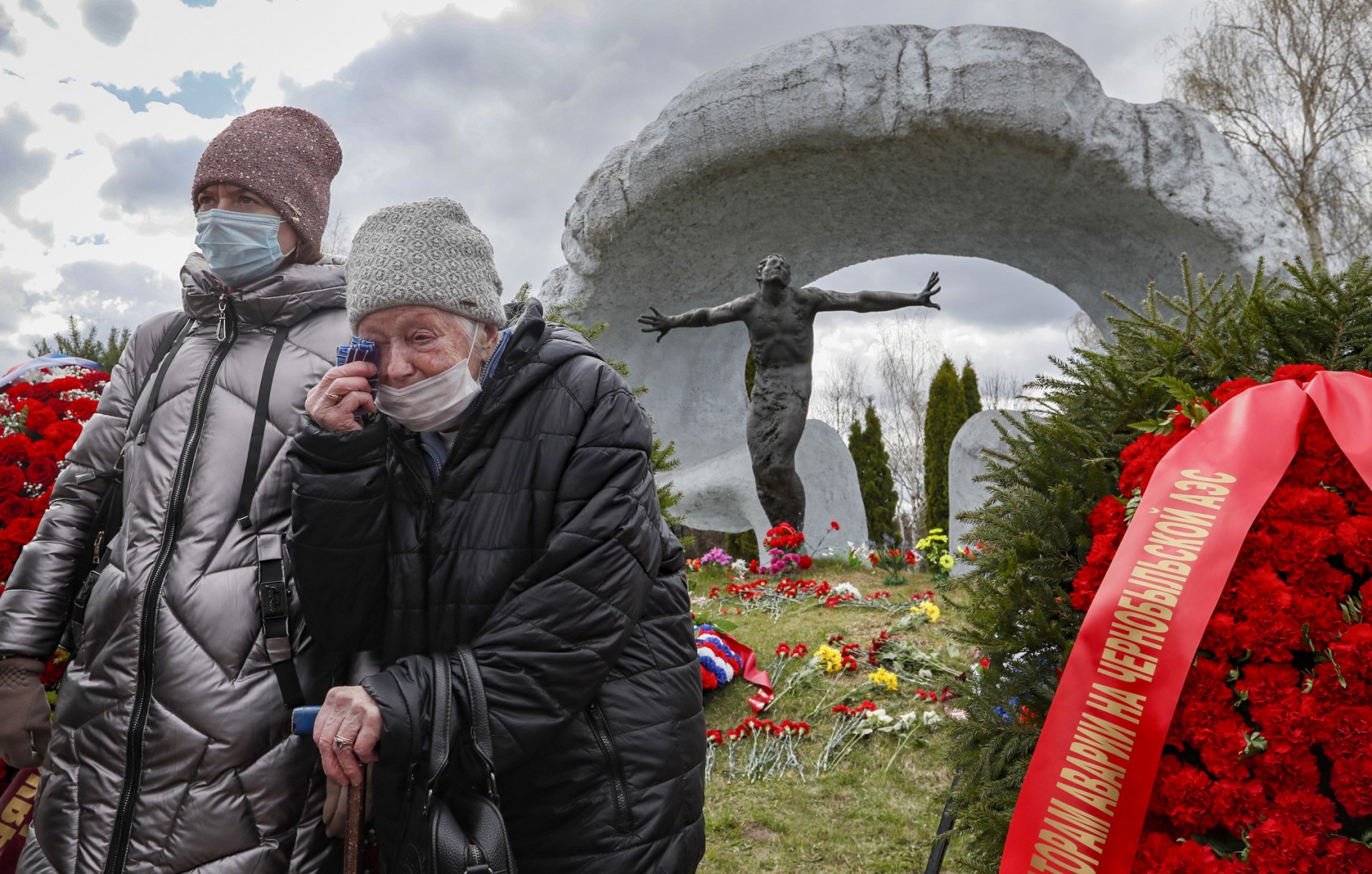
ON THIS DAY in 1986, workers ran a safety test at the Chernobyl Nuclear Power Plant in northern Ukraine. But the test went awry, starting a fire in a reactor and leading to one of the largest nuclear disasters in history. Smoke from the fire and a second explosion launched radioactive elements into the atmosphere, scattering them over the surrounding fields and towns.
Chernobyl is generally recognized as the worst nuclear accident on record, directly killing 31 people and causing widespread contamination in Eurasia. It’s estimated that thousands of people will eventually die earlier than they would have due to the cancers caused by their exposure.
Today, 35 years later, scientists are still uncovering the extent of the damage and starting to answer questions about the long-term legacy of radiation exposure on power plant workers, the people in the nearby community, and even their family members born years later.
READ: New studies highlight the possible impact of Chernobyl on genes
- Published on Science Daily, the studies—both conducted by the National Cancer Institute (NCI), a branch of the National Institute of Health (NIH)—sought to find what kind of changes the exposure to carcinogenic ionizing radiation had on those who came into contact with the explosion.
WIPP completes maintenance outage, intends to up shipments of nuclear waste post-pandemic
Reinhard Knerr, manager of the U.S. Department of Energy’s Carlsbad Field Office said WIPP will resume accepting shipments of low-level transuranic waste from DOE sites around the country and will continue to emplace the waste for final disposal in WIPP’s underground mine.
By: Adrian Hedden | currentargus.com April 26, 2021
Shipments and disposal of nuclear waste resumed at the Waste Isolation Pilot Plant after a two-month pause in the repository’s primary operations to allow personnel to complete several maintenance projects underground and on the surface.
WIPP completed 97 projects during the maintenance outage which ran from Feb. 15 to April 15, upgrading infrastructure throughout the facility.
The work involved mine operations, waste handling, hoisting, ground control, safety and engineering, and the break included a site-wide power outage to allow electrical work to be completed safely.
The Nuclear Bomb Is Ready: In Italy Soon. The B61-12 has a Nuclear Warhead with 4 “Selectable Power Options”
“It has been officially announced that the new nuclear bomb series production will begin in the fiscal year 2022, beginning October 1, 2021. It is unknown the number of B61-12 bombs that the US will deploy in Italy, Germany, Belgium and Holland to replace the B61s, whose actual number is secret. Satellite photos show renovations that have been carried out at Aviano and Ghedi bases in preparation for the new nuclear bombs’ arrival, the US Air Force F-35A, and Italian Air Force F-35A under US command will be armed with these bombs.”
BY: Manlio Dinucci | globalresearch.ca April 24, 2021
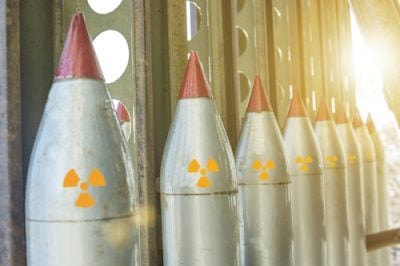
First published on December 3, 2020
***
A video was released on November 23 2020 by Sandia National Laboratories that shows a US F-35A fighter flying at supersonic speed 3000 meters above sea level, launching a B61-12 nuclear bomb (non-nuclear warhead equipped). The bomb did not fall vertically but glided until the tail section rocket ignition gave a rotational motion and the B61-12 (satellite-guided system) headed for the target and hit 42 seconds after launch. The test was carried out on August 25 at the Tonopah shooting range in the Nevada desert.
An official statement confirmed its full success: it was a real nuclear attack, proof that the fighter carried out at supersonic speed and in stealth attitude (with nuclear bombs placed in its internal hold) has the capability to penetrate through enemy defenses.
The B61-12 has a nuclear warhead with four selectable power options at launch depending on the target to hit. It has the ability to penetrate underground, exploding deep to destroy command center bunkers and other underground structures. The Pentagon’s program foresees the construction of about five hundred B61-12 with an estimated cost of roughly 10 billion dollars (so each bomb will cost double what it would cost if it were built entirely of gold).
Minorities threatened by atomic weapons plants in S. Carolina and NM, groups say
“As construction problems mounted, costs rose, and schedules slipped, (and) defendants hid the true status of the project,” the indictment said.
“…Delays and cost overruns — hidden by SCANA officials from the public and state regulators — eventually doomed the effort, making it one of the largest business failures in South Carolina history.”
BY SAMMY FRETWELL | April 22, 2021 thestate.com
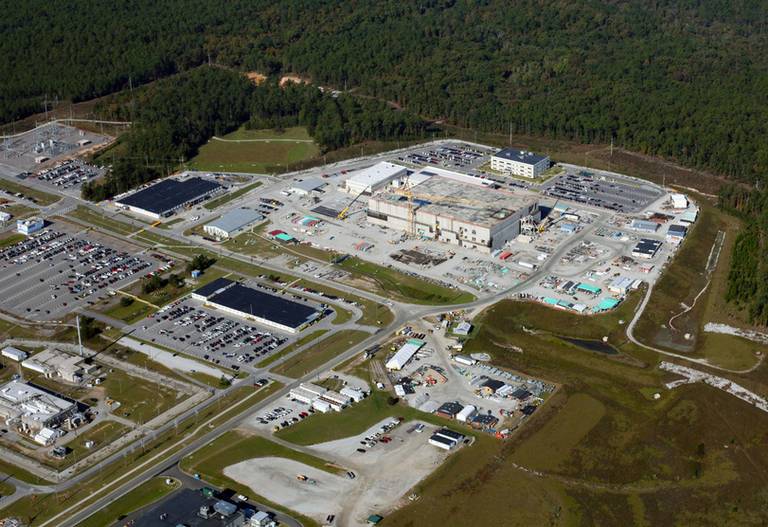
A coalition of environmental groups from the southern and western United States is threatening to sue the federal government over plans for plutonium pit factories in South Carolina and New Mexico that would produce components for additional atomic weapons.
In a letter Tuesday to U.S. Energy Secretary Jennifer Granholm, a non-profit law firm said the government should prepare an extensive environmental study before deciding to establish pit production factories at the Savannah River Site near Aiken and the Los Alamos site near Santa Fe, N.M.
African American and Native American communities have been hurt by past activities at the nuclear sites, and President Joe Biden’s administration should consider how the production factories would add to that burden, according to the South Carolina Environmental Law Project, a non-profit legal service in South Carolina.
Nine environmental groups, including SRS Watch, the Gullah Geechee Sea Island Coalition, Tri-Valley Cares of California and Nuclear Watch New Mexico, are among those seeking more study.
The law project’s letter also was sent to the National Nuclear Security Administration, a division of the energy department.
“The plans of DOE and NNSA to expand this production program will saddle the already-burdened communities represented by these groups with a significant amount of nuclear waste and pollution,’’ the letter from lawyer Leslie Lenhardt said.
Her letter said the pit production efforts are in “complete contravention’’ to an executive order by President Biden that federal agencies weigh the impact their policies and plans have on disadvantaged communities.
Groups Notify Biden Admin of Impending Lawsuit Over Nuclear Bomb Core Plans
Multi-state coalition says DOE’s plans to massively expand plutonium pit production violate a major environmental law and constitutes an environmental injustice.
Jay Coghlan of Nuclear Watch New Mexico commented, “Instead of maintaining the safety and reliability of the existing nuclear weapons stockpile, NNSA may actually undermine it because all future pit production is for speculative new-design nuclear weapons. This is a colossal and unnecessary waste of taxpayers’ money on top of already wasted taxpayers’ money.”
CHARLESTON, S.C. — A coalition of public interest organizations notified (PDF below) the U.S. Department of Energy (DOE) and the National Nuclear Security Administration (NNSA) urging a comprehensive review of plans to vastly ramp up production of nuclear bomb cores at the Los Alamos National Lab in New Mexico and the Savannah River Site in South Carolina.
In Tuesday’s letter to department officials, the groups say this lack of review violates the National Environmental Policy Act (NEPA) and would saddle already-burdened communities nearby the two DOE sites with significant quantities of toxic and radioactive waste, contravening President Biden’s executive order of making environmental justice a part of the mission of every agency.
Sparks flying from nuclear waste barrel prompt investigation
Flawed packing of radioactive waste caused sparks to fly from a container at Los Alamos National Laboratory, prompting evacuation of the work area and later the underground disposal site near Carlsbad where two similarly packed canisters were stored.
By: Scott Wyland | santafenewmexican.com April 15, 2021
The sparking caused no injuries, damage or radiation to be released, according to a letter the lab wrote to the New Mexico Environment Department.
But any combustion involving transuranic nuclear waste is deemed dangerous and calls up memories of the 2014 incident in which a ruptured container from Los Alamos closed the Waste Isolation Pilot Plant in Southern New Mexico for three years and cost almost $2 billion to clean up.
Environment, Public Health On The Way To Better Protection As Environment Department Receives Budget Increase
“After a decade of budget cuts, the New Mexico Environment Department’s (NMED) base budget will increase by 21.3% for the upcoming state fiscal year starting July 1, 2021. The additional $2.8 million will be a recurring increase to NMED’s operating budget. NMED’s overall operating budget for the upcoming fiscal year is approximately $93.4 million.”
NMED NEWS | LOS ALAMOS REPORTER April 14, 2021
“Starting in July, the New Mexico Environment Department will expand its efforts to safeguard communities and our environment,” said NMED Cabinet Secretary James Kenney. “Budget is policy and this is a clear investment in the health of New Mexicans and their environment.”
NMED’s budget is a combination of state general fund, federal funding, and revenues collected for various permits and licenses. Starting July 1, 2021, the general fund portion of NMED’s budget will increase from $13.1 million to $15.9 million – an increase of $2.8 million. The remainder of NMED’s budget is $77.5 million (federal funding and revenues collected for permits/licenses).
Offline Iowa Nuclear Plant Eyed as Site of Solar Project
CEDAR RAPIDS, Iowa (AP) — A decommissioned eastern Iowa nuclear plant could become the site of a new massive solar energy project.
NextEra Energy of Florida on Tuesday laid out plans in a meeting with nearby landowners to build a solar farm near the now-idle Duane Arnold Energy Center in Palo, The Gazette of Cedar Rapids reported.
The company said the project could bring in a $700 million capital investment and about 300 construction jobs. The solar farm would stretch across 3,500 acres near the plant and would produce up to 690 megawatts of solar energy — more than the nuclear plant had generated.
“We’re also hoping to accompany that solar project with up to 60 megawatts of AC-coupled batteries,” project manager Kimberly Dickey said in the meeting. Battery storage allows a company to store energy for use during peak energy-use times.
Waste Isolation Pilot Plant aims to expand underground facility to hold nuclear waste
“WIPP is supposed to be limited. The state did not agree to 12 panels.”
By: Adrian Hedden | currentargus.com April 15, 2021
A plan to build two new areas to dispose of nuclear waste began taking shape at the Waste Isolation Pilot Plant after the U.S. Department of Energy published a report on the feasibility of adding an 11th and 12th waste panel to the underground nuclear waste repository.
Japan To Dump Wastewater From Wrecked Fukushima Nuclear Plant Into Pacific Ocean
Japan’s government announced a decision to begin dumping more than a million tons of treated but still radioactive wastewater from the crippled Fukushima nuclear plant into the Pacific Ocean in two years.
Anthony Kuhn | npr.org April 13, 2021
The plant was severely damaged in a 2011 magnitude 9.0 quake and tsunami that left about 20,000 people in northeast Japan dead or missing.
Despite Tokyo’s assurances that discharging wastewater will not pose a threat to people or the environment, the decision was roundly criticized by the local fishing community, environmental groups and Japan’s neighbors. Within hours of the announcement, protesters rallied outside government offices in Tokyo and Fukushima.
Fukushima Wastewater Will Be Released Into the Ocean, Japan Says
Beyond Nuclear | beyondnuclear.org April 13, 2021
The government says the plan is the best way to dispose of water used to prevent the ruined nuclear plant’s damaged reactor cores from melting.
As reported by the New York Times.
The New York Times also ran a companion piece, focused on the official international protest of the ocean dumping, as by the neighboring governments of South Korea, China, and Taiwan.
The Washington Post has also reported on this story.
Thom Hartmann interviewed Beyond Nuclear’s Kevin Kamps on his national radio show (“Fukushima Nuclear Fish Coming to Your Plate, Happy?”). Here is the write up:
More nuclear waste is about to be released into the Pacific Ocean from Fukushima. Where it will be absorbed by plants, eaten by small fish, who are eaten by bigger fish, and concentrated through a process called “bioaccumulation.” Pretty soon those fish end up on your plate… Looking forward to a swim off the west coast? Enjoying your fish?
Here is the link to the recording of the interview.
[Corrections: The actual volume of radioactive wastewater to be dumped in the ocean is currently enough to fill around 500 Olympic-sized swimming pools; the dumping is not set to begin until a couple years from now, not before the Tokyo Olympics.]
Environmental Racism, Environmental Justice
“When uranium mining occurred in white communities, the waste it produced was removed from the proximity of the residents. This level of clean-up did not take place when uranium mining occurred close to low-income communities of color”
By: Ruby Stigers| snakeriveralliance.org April 10, 2021
Those living near Nuclear Power Plants (NPP’s) face extreme health risks. Blood, thyroid, breast, and other forms of cancer have the potential to form due to the various types of radioactive emissions that escape the NPP’s through the air, water, and soil.
The World Nuclear Association and The Nuclear Regulatory Commission (NRC) claim that exposure to low-level radiation is undetectable and not unsafe, yet countless studies confirm the danger of the radiation that occurs during normal operation at an NPP. According to Dean Kyne and Bob Bolin, Children are especially vulnerable to this exposure.
Toxic incinerators, uranium mines, atomic reactors, and other nuclear dumping sites are generally located on cheap land where there are limited resources and little organized opposition (Jantz, p. 249). Unfortunately, because of this, they are often located in Black, Indigenous, and low-income communities that suffer the devastating consequences of improperly handled nuclear waste and pollution.
DOE Planning to Increase Down-Blended Plutonium Shipments to Waste Isolation Pilot Plant
Savannah River Site is the third largest shipper of waste to WIPP, with 1,679 as of April 3, per the latest records from WIPP.
By: Adrian Hedden | currentargus.com April 7, 2021
Federal nuclear waste managers are planning to ramp up shipments of plutonium from a site in South Carolina for final disposal at the Waste Isolation Pilot Plant in southeast New Mexico.
The U.S. Department of Energy’s (DOE) Office of Environmental Management (EM) began preparing equipment at the Savannah River Site (SRS) in Aiken, South Carolina used to package and inspect drums of the waste before shipping to WIPP where it will be permanently disposed of in the repository’s underground salt formation.
The plutonium waste will be inspected to verify that it meets the criteria required for emplacement at WIPP, which is used to dispose of low-level transuranic (TRU) nuclear waste – mostly clothing items and equipment radiated during nuclear activities.
Scotland Reaches Green Landmark – Scotland generated 97.4% of its electricity demand from renewables last year
By: Juan Cole | scheerpost.com
In 2011, Scotland’s government, urged on by visionaries like Richard Dixon, set itself the ambitious goal to get 100% of its electricity from renewables by 2020. At that time, it only only got about a fourth from clean energy sources, and a lot of that was hydro.
The report card is in for 2020 and Scotland generated 97.4% of its electricity demand from renewables last year, just a whisker less than the 100% goal.
Scotland will host the COP26 climate summit in Glasgow in a few months, and is well placed to assert climate leadership.
Scotland no longer has a coal plant, and its one natural gas plant is under-utilized and seems likely to close in a few years.
DOE’s NNSA Reveals it’s Out of Money. Flat Broke. Busted. Nothing Left for Beneficial Nuclear Non-Proliferation Program to Convert Reactor from Weapon-Grade Uranium Fuel
By: SRS Watch | srswatch.com
The U.S. Department of Energy’s National Nuclear Security Administration (NNSA) has revealed that it has spent all of our money. Busted flat. Nothing left. Nada. Zilch. Nichts.
Well, that’s what it seems like at the NNSA has notified GE Hitachi Nuclear Energy that there are no funds available to convert a test reactor in Vallecitos, California from weapon-grade uranium (highly enriched uranium, HEU) to low-enriched uranium (LEU), as part of an nuclear non-proliferation effort.
On March 25, 2021, NNSA told GE Hitac hi Nuclear Energy: “you are hereby notified that Department of Energy funding will not be available in fiscal year 2021 to complete the conversion of NTR to LEU fuel.” And GE subsequently told the U.S. Nuclear Regulatory Commission that ” DOE funding is not currently available for conversion of the NTR fuel.”
See: “GE Hitachi Nuclear Energy Americas, LLC – Annual Statement of Non-availability of Federal Government Funding for Conversion from HEU to LEU for VNC Nuclear Test Reactor (NTR) at https://adamswebsearch2.nrc.gov/webSearch2/main.jsp?AccessionNumber=ML21084A808
BUT WAIT! NNSA continues to front for boosters and contractors engaged in project to convert the abandoned plutonium fuel (MOX) plant at the Savannah River Site into the SRS Plutonium Bomb Plant (PBP) at a cost of $4.6 billion (add higher number if you wish) by 2030 (add any date you wish). So, there seems to be money available for projects dangerous to our national security – making plutonium pits for unneeded and provocative new nuclear weapons – but not a penny left to get HEU out of commerce. This confirms that the priorities of NNSA are totally screwed up and that it’s placing contractor enrichment and parochial politics above national security. Congress must make sure that the HEU conversion program is fully funded and that the Ground Based Strategic Deterrent (with W87-1 warhead) and the new SLBM (with W93 warhead) – the first new weapons to get new plutonium pits – are terminated and funded halted. As in nada, zilch, nothing.
The New Shaft Permit Modification Part 3: Your Comments and the May 17th Public Hearing
As demanded by organizations and individuals, the New Mexico Environment Department (NMED) has scheduled a public hearing on adding a New Utility Shaft to the WIPP permit. The hearing will start at noon on Monday, May 17, 2021. Hundreds of people commented on the proposed new shaft in 2019 and 2020, 97 percent of whom objected to WIPP expansion and the new shaft.
NMED allowed the Department of Energy (DOE) to bypass the public process and start digging the new shaft with just a Temporary Authorization. But after receiving so many public comments in 2020 against the new shaft and against the Temporary Authorization, NMED stopped the construction of the shaft until after the public hearing. Public comments do make a difference!
You can comment now on the proposed new WIPP shaft, which is part of DOE’s plan to expand WIPP and operate it forever, rather than developing new repositories. The plan violates existing limits set in federal law, state agreements, the WIPP Permit, and DOE’s decades-old social contract with New Mexicans.
Your comments and participation can help stop the new shaft and DOE’s WIPP expansion plan!

Santa Fe City Council rejects LANL coalition agreement
By: Sean P. Thomas, The Santa Fe New Mexican | sfnewmexican.com March 31, 2021
The Santa Fe City Council has rejected an amended joint powers agreement with the Regional Coalition of LANL Communities over concerns about the organization’s impact and one councilor’s plan to introduce a measure removing the city from the group.
“I don’t think we should just approve an updated JPA because we want to go along to get along,” said City Councilor Renee Villarreal, who noted she intends to propose the city end its affiliation with the coalition. “Some of my colleagues say we should have a seat at the table, but I think we should have it at the right table.”
The council voted 5-3 against the agreement, with Mayor Alan Webber and Councilors Carol Romero-Wirth and Jamie Cassutt-Sanchez voting in favor. City Councilor Michael Garcia, the city’s representative on the coalition, abstained.
Rejecting the agreement does not pull the city out of the organization.
Villarreal has been the loudest critic of the coalition, which was established in 2011 to give communities surrounding Los Alamos National Laboratory more of a voice in its job development and cleanup. She questioned in previous committee meetings how the city stood to benefit.
“Our values have not aligned,” Villarreal said. “I’m trying to understand changing the JPA, what does that change? How does our voice actually get heard since it hasn’t been heard the last 10 years?”
Trinity Downwinders: 75 Years And Waiting
Watch the Hearing with the House Judiciary Committee below, which occurred 3/24/21. Click HERE to visit the website. Click HERE to read the Santa Fe New Mexican article written about the hearing. See Hearing below:
‘Sparking’ nuclear waste drum at Los Alamos National Lab leads to evacuation at WIPP
“A sparking drum of nuclear waste at Los Alamos National Laboratory (LANL) led to a temporary evacuation of a section of the Waste Isolation Pilot Plant’s underground repository as officials investigated if any other drums of waste emplaced at WIPP posed a similar threat.”
By: Adrian Hedden, Carlsbad Current-Argus March 31, 2021
Investigators later found no one was hurt and no radiation was released, according to a March 12 letter from the lab to the New Mexico Environment Department (NMED) Hazardous Waste Bureau.
The lab reported it happened as workers packed a drum of low-level transuranic (TRU) waste on Feb. 26 for delivery and disposal at WIPP.
TRU waste is equipment, clothing materials and other items radiated during nuclear activities.
During the packing process, two high efficiency particulate air (HEPA) filters were placed into a drum, followed by a “metal waste item,” read the letter from the lab.
The item tore the bag containing the HEPA filters, and sparks were observed coming out of the container when the item contacted the filters.
Nuclear News Archives – 2021
Nothing Found
It seems we can’t find what you’re looking for. Perhaps searching can help.
Nuclear News Archives – 2020
Nothing Found
It seems we can’t find what you’re looking for. Perhaps searching can help.
Nuclear News Archives – 2019
Nothing Found
It seems we can’t find what you’re looking for. Perhaps searching can help.
Nuclear News Archives – 2018
Nothing Found
It seems we can’t find what you’re looking for. Perhaps searching can help.


